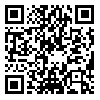Volume 22, Issue 1 (2025)
ioh 2025, 22(1): 0-0 |
Back to browse issues page
Ethics code: IR.SBMU.PHNS.REC.1403.143
Download citation:
BibTeX | RIS | EndNote | Medlars | ProCite | Reference Manager | RefWorks
Send citation to:



BibTeX | RIS | EndNote | Medlars | ProCite | Reference Manager | RefWorks
Send citation to:
Hooshmand M, Hatami H, Gholamnia R, Olazadeh K, salehi sahlabadi A. Analysis of the Impact of Mental Workload on Safety Behavior of Workers in the Iron and Steel Industry with Emphasis on the Mediating Role of Occupational Burnout: A Case Study in Yazd Province. ioh 2025; 22 (1) : 11
URL: http://ioh.iums.ac.ir/article-1-3737-en.html
URL: http://ioh.iums.ac.ir/article-1-3737-en.html
Department of Occupational Health and Safety Engineering, School of Public Health and Safety, Shahid Beheshti University of Medical Sciences, Tehran,Iran , asalehi529@gmail.com
Abstract: (416 Views)
Introduction: The steel industry poses various physical and psychological risks to workers due to its working conditions and environment. Analyzing the mental and physical health of workers and identifying effective factors can significantly improve their health conditions. This study aims to identify and examine the effect of mental workload on safety behavior by mediating role of occupational burnout among workers in the iron and steel industry in Yazd Province.
Methods and Materials: This descriptive-analytical study was conducted on 150 employees of a steel factory in 2024. The relationship between mental workload, occupational burnout, and safety behaviors was assessed using a survey method and questionnaires. CarMen-Q mental workload, MBI-GS occupational burnout and the Zhang safety behavior questionnaires were used for data collection. Data analysis was performed using SPSS software version 25 at a significance level of 95%. Additionally, structural equation modeling was used to examine the relationships between study variables, using SmartPLS software version 3.
Results: The mental workload averaged 72.86 ± 11.87, and the occupational burnout averaged 58.66 ± 8.96, indicating a high level of both variables in this study. The results of the structural equation model indicated a significant positive correlation between mental workload and occupational burnout (r = 0.630, p < 0.001). A significant negative correlation was also observed between mental workload and safety behavior (r = -0.696, p < 0.003) and also between occupational burnout and safety behavior (r = -0.540, p < 0.001).
Conclusion: Based on the results, occupational burnout mediates the relationship between mental workload and safety behavior. This means that mental workload directly affects safety behaviors and also indirectly affects them through its impact on occupational burnout.
Methods and Materials: This descriptive-analytical study was conducted on 150 employees of a steel factory in 2024. The relationship between mental workload, occupational burnout, and safety behaviors was assessed using a survey method and questionnaires. CarMen-Q mental workload, MBI-GS occupational burnout and the Zhang safety behavior questionnaires were used for data collection. Data analysis was performed using SPSS software version 25 at a significance level of 95%. Additionally, structural equation modeling was used to examine the relationships between study variables, using SmartPLS software version 3.
Results: The mental workload averaged 72.86 ± 11.87, and the occupational burnout averaged 58.66 ± 8.96, indicating a high level of both variables in this study. The results of the structural equation model indicated a significant positive correlation between mental workload and occupational burnout (r = 0.630, p < 0.001). A significant negative correlation was also observed between mental workload and safety behavior (r = -0.696, p < 0.003) and also between occupational burnout and safety behavior (r = -0.540, p < 0.001).
Conclusion: Based on the results, occupational burnout mediates the relationship between mental workload and safety behavior. This means that mental workload directly affects safety behaviors and also indirectly affects them through its impact on occupational burnout.
Article number: 11
Type of Study: Research |
Subject:
Ergonomics
Received: 2025/03/8 | Accepted: 2025/06/11 | Published: 2025/03/30
Received: 2025/03/8 | Accepted: 2025/06/11 | Published: 2025/03/30
Send email to the article author
| Rights and permissions | |
 |
This work is licensed under a Creative Commons Attribution-NonCommercial 4.0 International License. |



